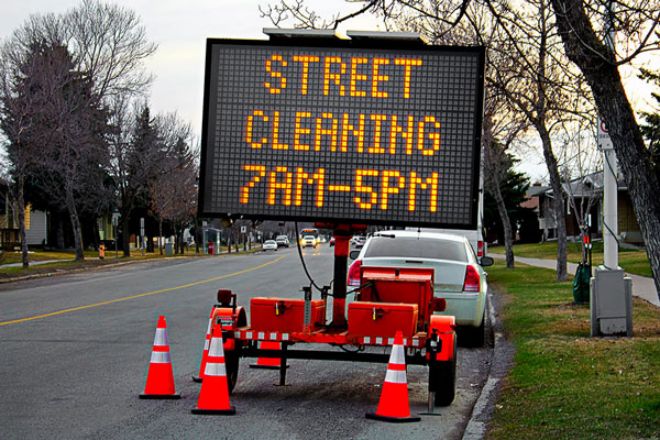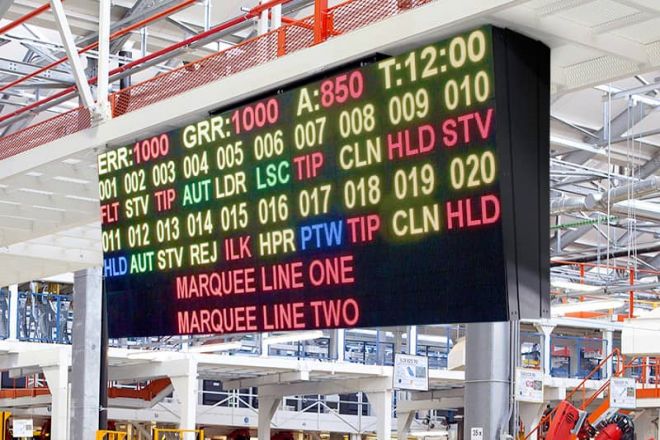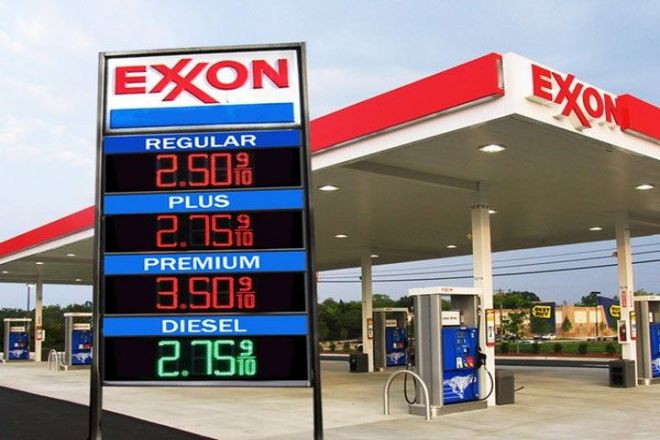소개

As a new type of display technology, LED signage has been widely used in various fields and has become an indispensable part of modern society. The emergence of LED signage not only improves the efficiency and accuracy of information transmission but also contributes to the beautification and cultural construction of the city.
This article will show you many aspects of LED signage. Let’s take a look.
1. What is an LED signage?
LED signage, in short, is a kind of sign made with 주도의 (light-emitting diode) technology. LED, fully known as a light-emitting diode, is a special electronic component that converts electrical energy into light energy, thus emitting light visible to our naked eye.
The principle of this is that electrons move in a specific structure inside the LED. When the electrons are combined with the hole, they will release energy and appear in the form of light.
This kind of luminescence has a great advantage, which is that it is very efficient. The luminous efficiency of LED is extremely high, up to more than 80%; that is to say, most of the electrical energy is converted into light energy instead of a large part of the electrical energy converted into thermal energy like some traditional light sources. Therefore, LED signage is regarded as a green and environmentally friendly light source.
Compared with our common incandescent lamps and fluorescent lamps, LED signage has significant advantages in energy consumption. Under the same lighting conditions, the power consumption of LED signage is only 1/8 of the incandescent lamp and 1/2 of the fluorescent lamp.
This means that using LED signage is not only more energy-saving but also more economical.
In addition to energy saving, LED signage has many other advantages. For example, it has a very long lifespan and can theoretically reach 100,000 hours, which means that it can be used for many years without replacement.
At the same time, the LED signage is also a cold light source with no thermal radiation and is very safe to use. It can also accurately control the distribution of light, make the lighting more uniform, and improve the safety of the working environment.
In addition, the switching speed of the LED signage is also very fast, and the response time is only dozens of nanoseconds. This means that when you need to turn it on or off, it can respond almost immediately without delay. Moreover, LED signage is small in size and light in weight, which makes it very convenient to integrate into various devices or make miniaturized signs.
2. What is the difference between LED signage and traditional signage methods?

Compared with traditional signs, the difference between LED signage is mainly reflected in the following aspects, which can be easily understood by even people who do not understand this field.
가장 먼저, from the perspective of brightness and visual effects, LED signage has significant advantages. Traditional signs use conventional lamps or neon lights. Although the light they emit is obvious enough, it may be difficult for people to identify in some under-light or night environments. The LED signage is different.
It uses high-brightness LED light beads, which can emit bright and clear light even in a dim environment, making the content of the sign clear at a glance. It’s like in the dark, and the LED signage is like a small light illuminating our way forward.
둘째, from the perspective of energy consumption and environmental protection, LED signage is also better. Traditional signs may consume a lot of electricity to maintain their brightness, while LED signage is different. The LED beams it uses consume very low power and can save a lot of electricity.
This is like the energy-saving light bulb in our home. Although the light is very bright, it consumes very little electricity. In addition, the service life of LED signage is also longer, and there is no need to replace them frequently, which further reduces the waste of resources and is more environmentally friendly.
Thirdly, in terms of functionality and intelligence, LED signage also has advantages that cannot be compared with traditional signs. Traditional signs can only display fixed content, while LED signage can be programmed to achieve dynamic display, such as scrolling text or pictures, and even change the color or brightness as needed. This is like the screen on our mobile phone, which can display all kinds of dynamic content rather than unchanged.
게다가, some advanced LED signage can also be connected to sensors and control systems to realize automatic switching, brightness adjustment, and other functions, making them more convenient and intelligent to use.
마지막으로, from the perspective of beauty and personalization, LED signage also has more advantages. The traditional sign has a single style, and the color is relatively fixed, while the LED signage can be customized according to different needs and scenes.
It can design a variety of unique shapes and colors and even add animation effects to it so that the signboard not only has an indicator function but also has a good decorative effect. It’s like we choose clothes. You can choose different styles and colors according to your preferences and occasions.
3. What can LED signage do for smart cities?
The LED signage is a “little est” in a smart city. It is like a smart little assistant in the city, which helps us solve many problems and make urban life more convenient and safe.
가장 먼저, the LED signage can tell us how to get there. At complex traffic intersections, LED signage will display traffic information in real-time, such as which road is blocked and which road can reach the destination faster. In this way, drivers and pedestrians can choose the most suitable route according to the information on LED signage to avoid traffic jams and getting lost.
Secondly, LED signage can also help us in an emergency. For example, if there is a fire or earthquake, the LED signage will immediately become our “escape guide,” telling us where the nearest safety exit is and how to leave the dangerous place as soon as possible.
게다가, when walking on the street, we often see various shops and billboards, many of which are made of LED signage. They are not only bright and attractive but also can change content at any time to display the latest discount information or new products. In this way, merchants can better attract customers and promote sales.
Moreover, the LED signage is also an “energy-saving man.” It does not use electricity like traditional light bulbs but can emit very bright light with little electricity. In this way, it can not only save energy but also reduce pollution and make our city more environmentally friendly.
4. What types of LED signage are available on the market?

There are many kinds of LED signage on the market, each of which has its own unique application scenarios and functions. The following are some common LED signage types:
- Direction signs:
These kinds of signs are mainly used to indicate direction and are common in traffic intersections, parking lots, shopping malls, and other places. They display arrows, pointers, and other styles through LED displays to provide clear guidance and information for pedestrians or vehicles.
- Information release screen:
This LED signage is mainly used to publish all kinds of information, such as traffic conditions, weather forecasts, advertising, etc. They can update the content in real-time and provide timely and accurate information services for the public.
- Traffic guidance screen:
It is mainly used for highways or urban roads, providing traffic route information through LEDs and guiding vehicles to run according to the designated route. They help reduce traffic congestion and improve the efficiency of road use.
- Warning signs:
These kinds of signs are mainly used to warn people to pay attention to safety, such as construction sites, dangerous areas, etc. They remind people to take precautions through eye-catching warnings or patterns on LED signage.
Driving signs: These kinds of signs are mainly used to guide the driving direction of vehicles, such as highways, urban roads, etc. They display lane indications, speed limit signs, and other information through LEDs to ensure the safe and orderly driving of vehicles.
게다가, there are some special types of LED signage, such as interactive signs, touchscreen signs, etc. These signs combine advanced technology and interactive functions to provide users with a more convenient and efficient service experience.
Generally speaking, there are many kinds of LED signage on the market, each with its characteristics. Users can choose the appropriate type according to their actual needs and application scenarios to achieve the best guidance and information release effect.
5. In addition to smart cities, what other scenarios can LED signage be used in?
LED signage is widely used in smart cities, but its use is not limited to this field. In fact, LED signage is suitable for a variety of scenes due to its high brightness, readability, and flexibility. The following are some scenarios where LED signage may be applied:
Commercial advertising and promotion: LED signage is often used in commercial areas such as shops, shopping malls, and supermarkets. They can be used to display special offers, promotional information, brand logos, etc., to attract customers’ attention and enhance brand image.
Entertainment venues and performances: In concerts, concerts, sports events, and other entertainment venues, LED signage can be used to display performance information, seat numbers, guide routes, etc., to help the audience quickly find their place and also add an atmosphere to the event.
Transportation hubs and public places: In airports, railway stations, subway stations, bus stations, and other transportation hubs, LED signage can provide real-time traffic information, flight dynamics, train schedules, etc., which is convenient for passengers to obtain the required information and improve travel efficiency.
Exhibitions and conferences: In various exhibitions and conferences, LED signage can be used to indicate booths, conference rooms, rest areas, and other locations to help participants quickly find their destinations.
Industry and manufacturing: In factories, warehouses, and other industrial places, LED signage can be used to indicate equipment status, safety warnings, operation processes, and other information to improve production efficiency and ensure work safety.
Education and schools: In schools, universities, and other educational places, LED signage can be used to indicate classrooms, laboratories, libraries, and other locations to help students and teachers quickly find destinations.
6. What are the maintenance requirements for LED signage? How does it compare with traditional signage maintenance?

The maintenance requirements of LED signage mainly include the following aspects:
- Regular inspection:
Regular inspection of LED signage to ensure their normal operation. This includes checking whether the power supply, wiring, LED lights, and other components are in good condition and whether the surface of the signage is damaged or contaminated.
- Cleaning and maintenance:
Keep the surface of the LED signage clean and tidy, and regularly clean up the dust, dirt, and other debris on the surface of the sign. When cleaning, you should use a soft and dry cloth and avoid using detergents containing chemical ingredients to avoid damage to the sign.
- 방수 및 방습:
LED signage should be installed in a dry and ventilated environment to avoid prolonged exposure to humid or high humidity. If the signage needs to be installed outdoors, waterproof and moisture-proof measures should be taken to ensure its normal operation.
Compared with traditional signage maintenance, the maintenance requirements of LED signage are more complex and refined. Traditional signage usually requires simple cleaning and replacement, while LED signage involves the maintenance and maintenance of multiple components, such as circuits and light sources.
In addition, LED signage needs to be calibrated and adjusted regularly for brightness, color temperature, and other parameters to ensure the best display effect.
However, although the maintenance requirements of LED signage are higher, their advantages are more obvious. LED signage has higher brightness and better visual effects, which can better attract people’s attention.
At the same time, LED signage also has a longer service life and lower energy consumption, which can bring better economic benefits to merchants.
결론
In a word, with its unique characteristics, LED signage plays an increasingly important role in commercial, transportation, public places, and advertising industries. I believe that its influence will be very great in the future.
Finally, if you want to know more about LED signage, 저희에게 연락주세요.
